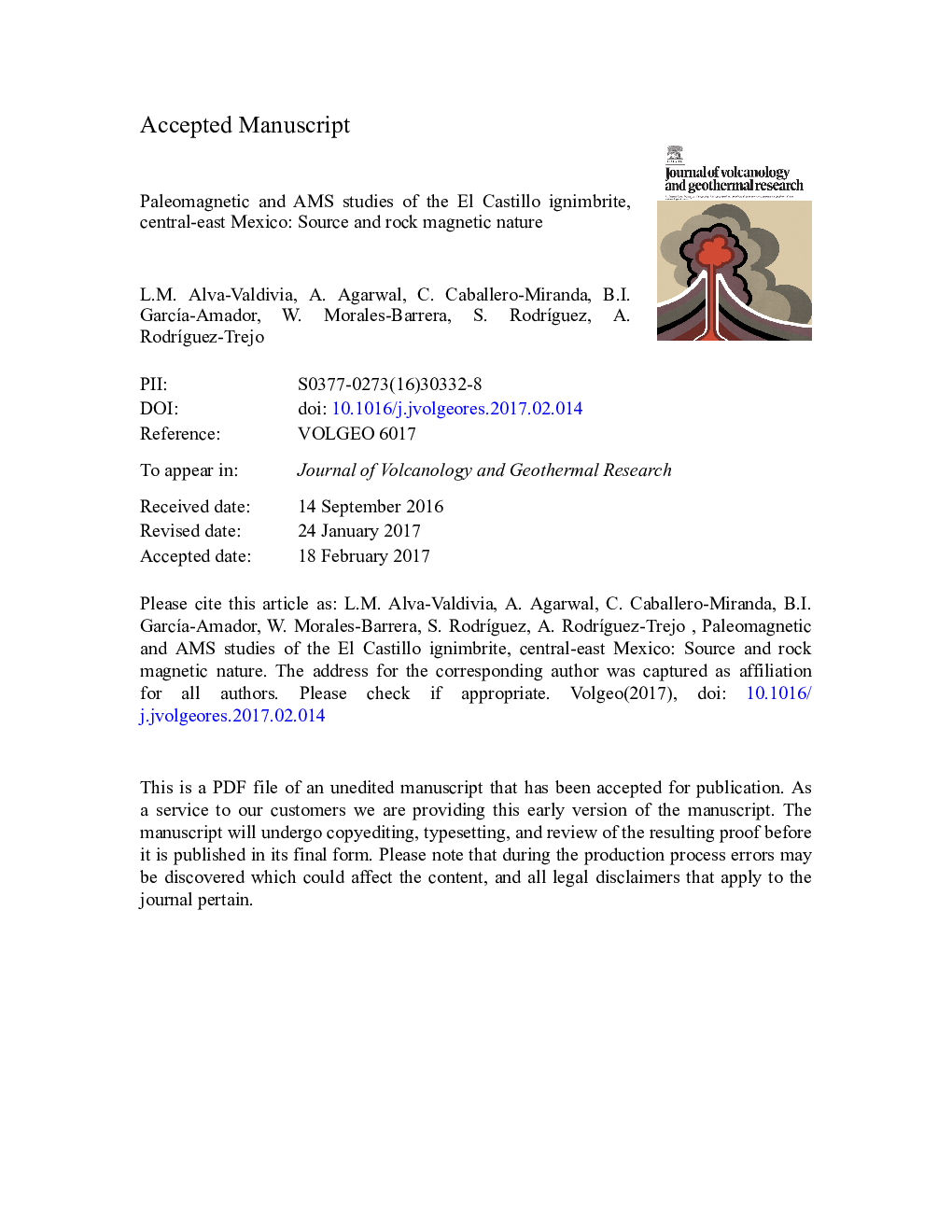| Article ID | Journal | Published Year | Pages | File Type |
|---|---|---|---|---|
| 5783862 | Journal of Volcanology and Geothermal Research | 2017 | 43 Pages |
Abstract
Lithological, petromagnetic, paleomagnetic and magnetic fabric studies are employed to determine the flow direction and the location of the source of the, 2.44 to 2.21Â Ma, El Castillo ignimbrite in the central-east Mexico. Based on the increasing matrix to pumice ratio and decreasing pumice size, the ignimbrite field is divided into the northwestern, central and south-southeastern sectors. Lithological comparisons among the three sectors reveal that the ignimbrite had flowed from NW to SE, and the source is in the NW part of the study area. Thermomagnetic results concur with the increasing matrix proportions from the proximal to the distal sector. The coercivity and magnetization ratios of the hysteresis parameters are lower in the SE sector than in the NW and central sectors. The dominant flow direction inferred through magnetic fabrics, at most sites, is NW to SE, which coincides with the direction inferred from lithological comparisons. However, at some sites magnetic fabrics demonstrate flow towards ENE or other various directions. The paleomagnetic analysis and field observations reveal that these anomalous directions are a consequence of anticlockwise block rotation and tilting due to normal and lateral faulting in the region.
Related Topics
Physical Sciences and Engineering
Earth and Planetary Sciences
Geochemistry and Petrology
Authors
L.M. Alva-Valdivia, A. Agarwal, C. Caballero-Miranda, B.I. GarcÃa-Amador, W. Morales-Barrera, S. RodrÃguez-Elizarraráz, A. RodrÃguez-Trejo,
